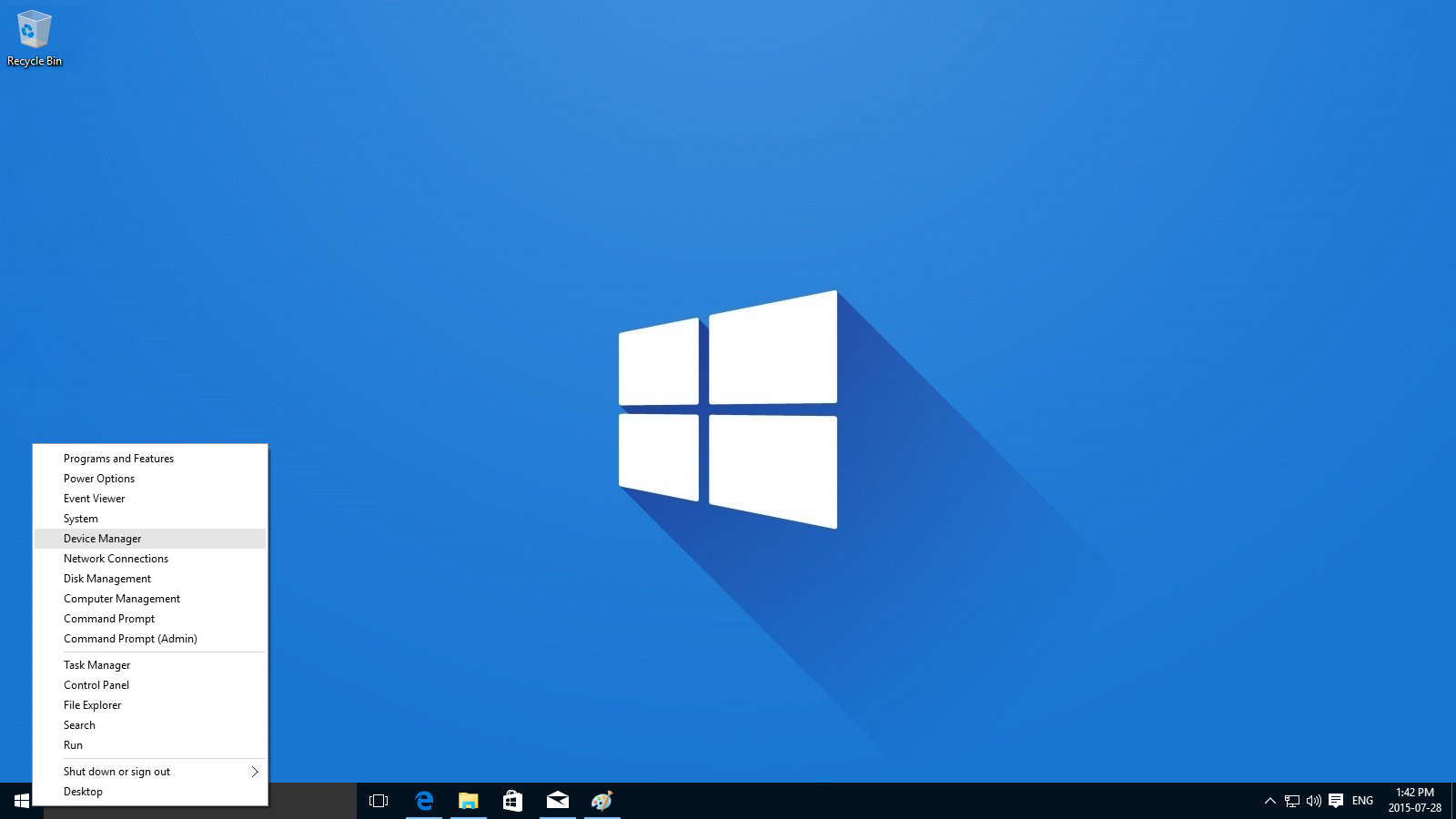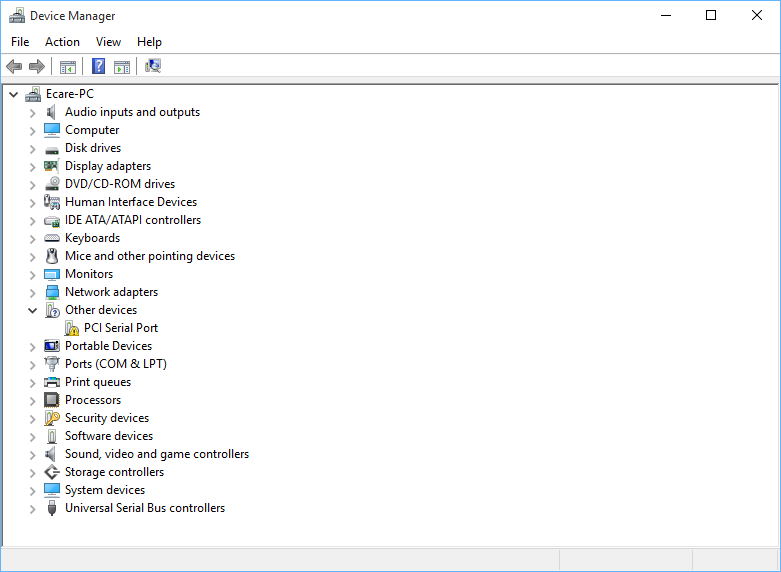- Shaw Support
- :
- Articles
- :
- Internet Articles
- :
- How to enable, update, and reset your network adap...
- Article History
- Bookmark
- Subscribe
- Printer Friendly Page
- Report Inappropriate Content
How to enable, update, and reset your network adapters
Windows 10 instructions
Continue reading for instructions on how to enable, update, or reset your network adapter on your Windows 10 computer.
- Right-click the Start menu button at the bottom left corner of your Desktop screen.
- Select Device Manager. The Device Manager window will appear and will show you a full list of the components that are installed on your computer, including the keyboard and mouse.
- Select Network Adapters. In this list, you will have a LAN Network Adapter, which allows your computer to connect to the Internet while plugged into the modem with an Ethernet Cable, and you may also have a Wireless Network Adapter. Determine if your Internet-related issue is occurring while you are directly connected to the modem, or only through wireless, then find the appropriate network adapter in the list.
- Right-click on this driver and you will be presented with a list of options, including Properties, Enable or Disable, and Update.
- First, select the Update option from this list and allow the update manager to run and install any new versions of the driver. If no updates can be found, or this has not resolved the issue, you can right click on the driver again and then select Disable, wait a few moments, and then choose Enable, which will reset the driver.
- Once completed, you can reconnect to your network and test the connection again.
Related: Windows 10 Overview
Windows 8 instructions
Follow these instructions for how to enable, update, or reset your network adapter on your Windows 8 computer:
- Navigate to your Desktop by selecting the Desktop app from your start screen, or by pressing the WINDOWS key.

- Right-click on the bottom left corner of your Desktop screen to bring up your advanced Start menu.
- Select Device Manager. The Device Manager window will appear and will show you a full list of the components that are installed on your computer, including the keyboard and mouse.

- Select Network Adapters. In this list, you will have a LAN Network Adapter, which allows your computer to connect to the Internet while plugged into the modem with an Ethernet cable, and you may also have a Wireless Network Adapter. Determine if your Internet-related issue is occurring while you are directly connected to the modem, or only connected through wireless, then find the appropriate Network Adapter in the list.
- Right-click on this driver and you will be presented with a list of options, including Properties, Enable or Disable, and Update.
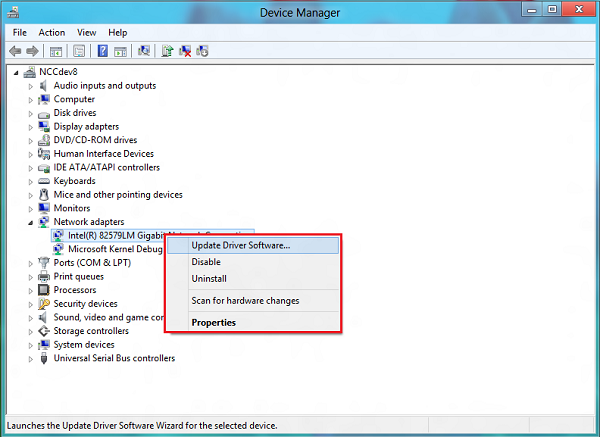
- First, select the Update option from this list and allow the update manager to run and install any new versions of the driver. If no updates can be found, or this has not resolved the issue, you can right click on the driver again and then select Disable, wait a few moments, and then choose Enable, which will reset the driver.
- Once completed, you can reconnect to your network and test the connection again.
Windows 7 instructions
Learn how to enable, update, or reset your network adapter on your Windows 7 computer by following these instructions:
- Start by clicking on your Start Orb
 and then find the Search Programs and Files option at the bottom of the window that appears.
and then find the Search Programs and Files option at the bottom of the window that appears. - Enter Device Manager into this search field and then press the enter key. The Device Manager window will appear and will show you a list of the components that are installed on your computer, including the keyboard and mouse.

- Select Network Adapters.
- Find Network Adapters on the list and then click the arrow icon located to the left of it, which will expand the category to show you all of the network adapters that are currently installed on your computer. You may see more than one device listed. In this list, you will have a LAN Network Adapter, modem with an Ethernet cable, and you may also have a Wireless Network Adapter. Determine if your Internet-related issue is occurring while you are directly connected to the modem, or only connected through wireless, then find the appropriate network adapter in the list.
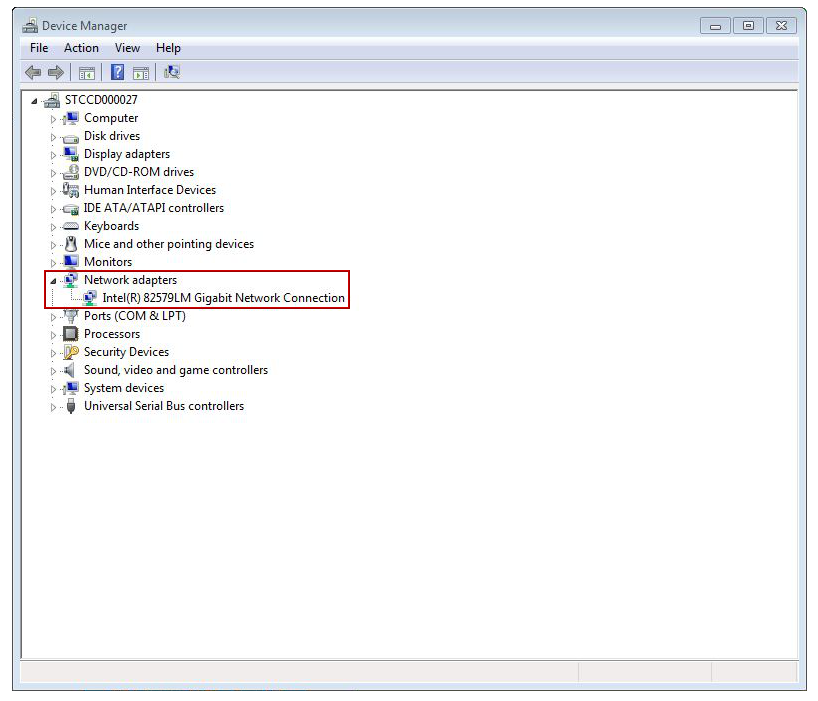
- Right-click on this driver and you will be presented with a list of options, including Properties, Enable or Disable, and Update.
- First, select the Update option from this list and allow the update manager to run and install any new versions of the driver. If no updates can be found, or this has not resolved the issue, you can right click on the driver again and then select Disable, wait a few moments, and then choose Enable, which will reset the driver.
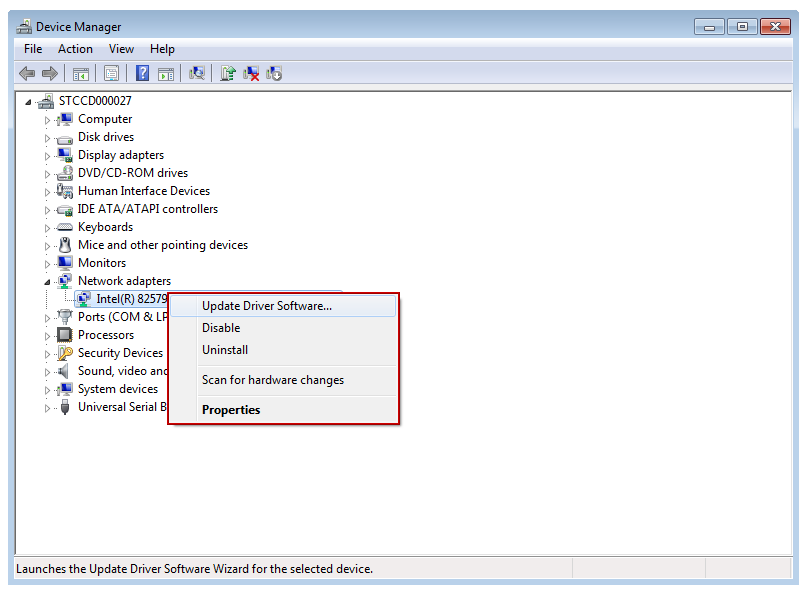
- Once completed, you can reconnect to your network and test the connection again.
Windows Vista instructions
If you have a Windows Vista computer, follow the instructions below to learn how to enable, update, and reset your network adapter.
- Start by clicking on your Start Orb
 and then find the Start Search option at the bottom of the window that appears.
and then find the Start Search option at the bottom of the window that appears. - Enter Device Manager into this search field and then press the enter key. The Device Manager window will appear and will show you a full list of the components that are installed on your computer, including the keyboard and mouse.
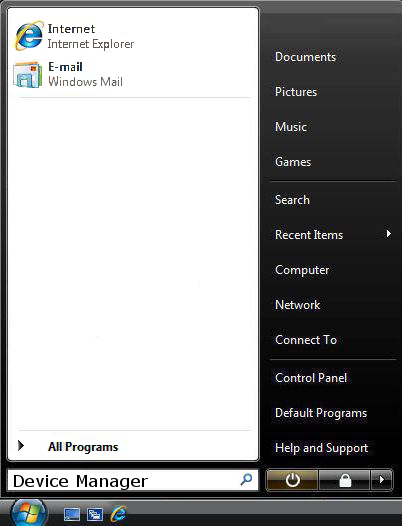
- Select Network Adapters.
- Find Network Adapters on the list and then click the arrow icon located to the left of it, which will expand the category to show you all of the network adapters that are currently installed on your computer. You may see more than one device listed. In this list, you will have a LAN Network Adapter, which allows your computer to connect to the Internet while plugged into the modem with an Ethernet cable, and you may also have a Wireless Network Adapter. Determine if your Internet-related issue is occurring while you are directly connected to the modem, or only connected through wireless, then find the appropriate network adapter in the list.
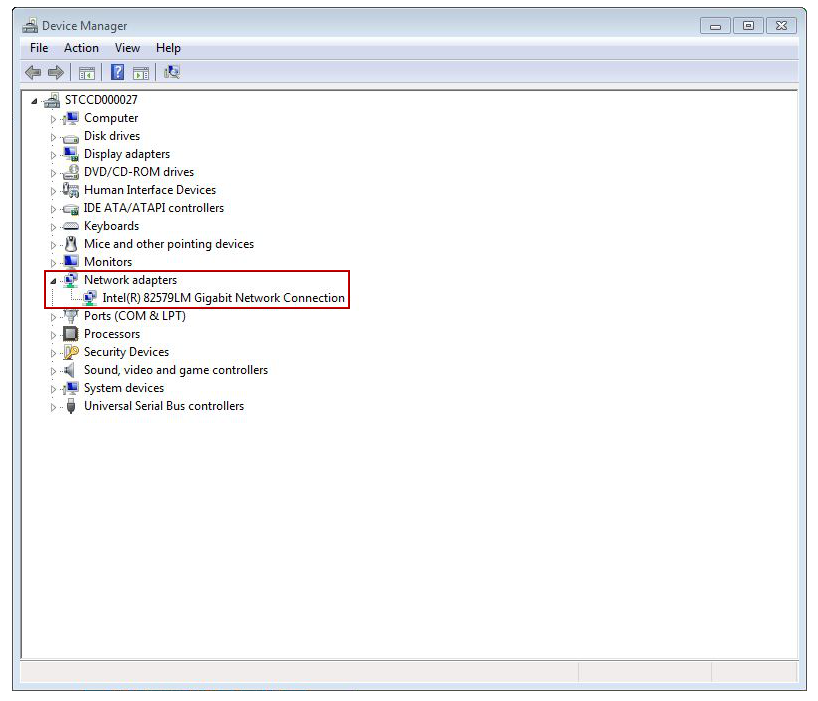
- Right-click on this driver and you will be presented with a list of options, including Properties, Enable or Disable, and Update.
- First, select the Update option from this list and allow the update manager to run and install any new versions of the driver. If no updates can be found, or this has not resolved the issue, you can right click on the driver again and then select Disable, wait a few moments, and then choose Enable, which will reset the driver.
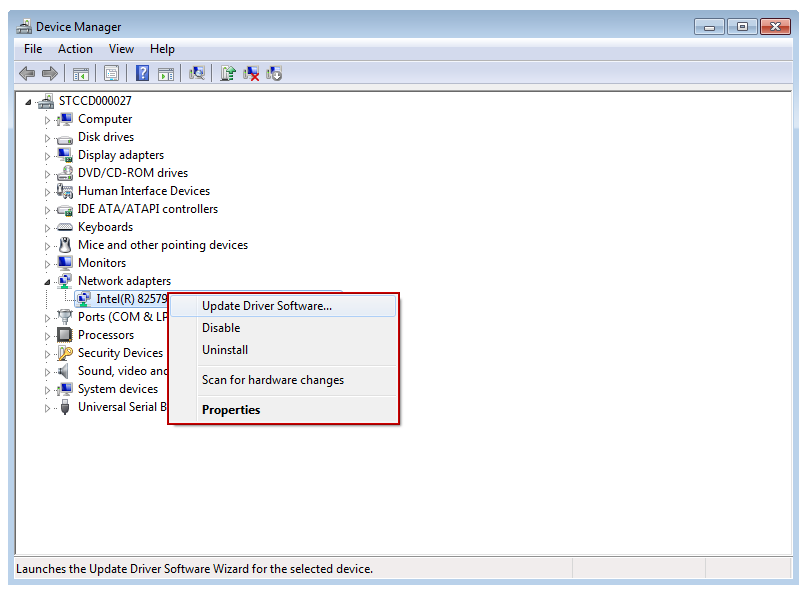
- Once completed, you can reconnect to your network and test the connection again.
Windows XP instructions
The following steps will explain how to enable, update and reset your network adapter on your Windows XP computer.
- Click on the Start menu, select Settings, and then select Control Panel.
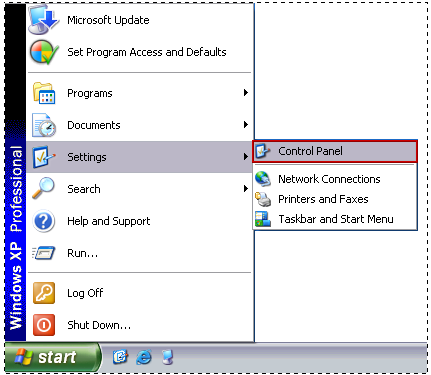
- Select the System tool.
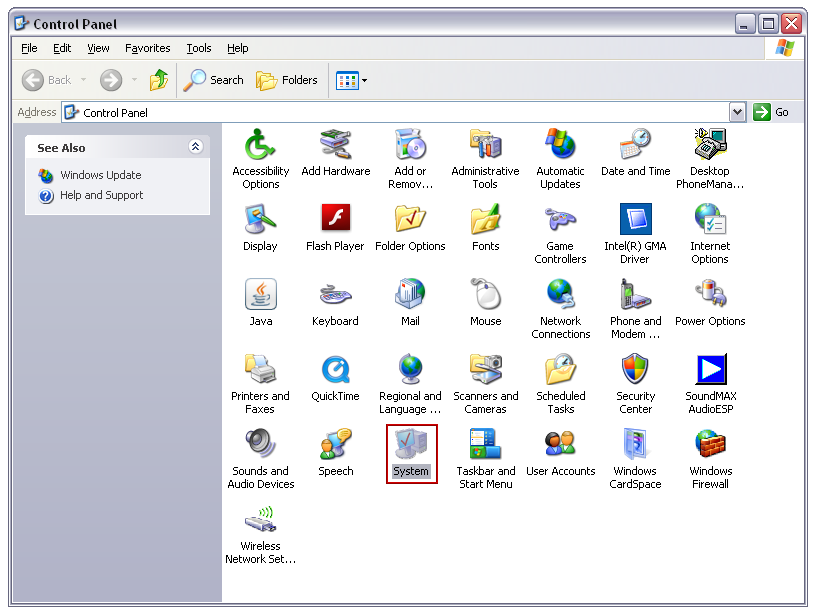
- Choose the Hardware tab and open the Device Manager.
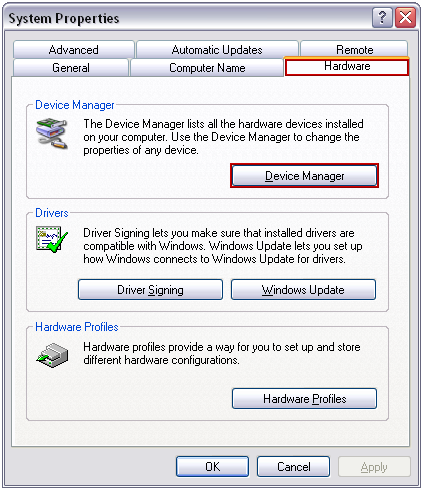
- Find Network Adapters on the list and then click the arrow icon located to the left of it, which will expand the category and show you all of the network adapters that are currently installed on your computer. You may see more than one device listed. In this list, you will have a LAN Network Adapter, which allows your computer to connect to the Internet while plugged into the modem with an Ethernet cable, and you may also have a Wireless Network Adapter. Determine if your Internet-related issue is occurring while you are directly connected to the modem, or only connected through wireless, then find the appropriate network adapter in the list.
- Right-click on this driver and you will be presented with a list of options, including Properties, Enable or Disable, and Update.
- First, select the Update option from this list and allow the update manager to run and install any new versions of the driver. If no updates can be found, or this has not resolved the issue, you can right click on the driver again and then select Disable, wait a few moments, and then choose Enable, which will reset the driver.
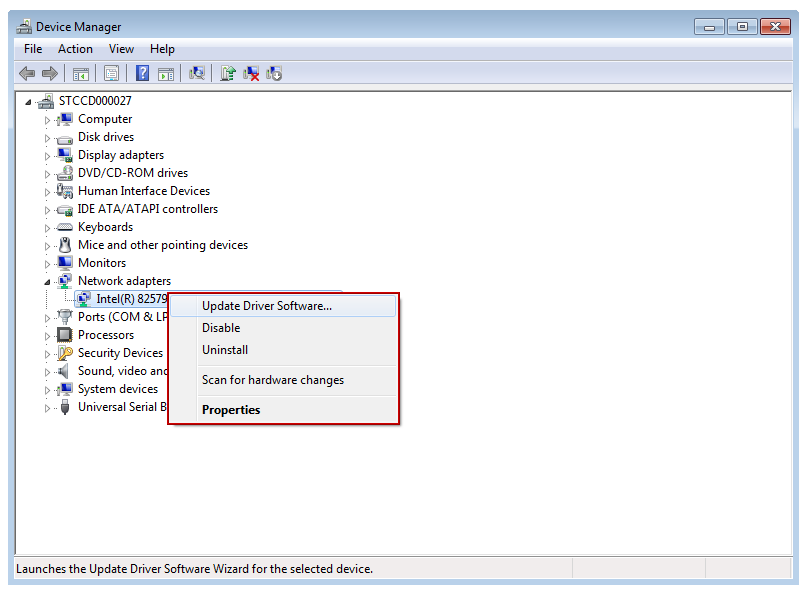
- Once completed, you can reconnect to your network and test the connection again.
Mac OS instructions
Enable, update, or reset your network adapter on your Mac OS computer by following these steps:
- Navigate to the WiFi AirPort icon at the top of your desktop.

- Click on the WiFi AirPort icon and a drop-down list should appear with options such as Turn Wi-Fi Off, Join Other Network..., and Open Network Preferences...
- From this list, click Turn Wi-Fi Off, then wait a full minute.
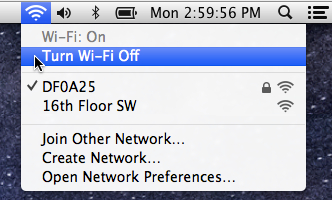
- Repeat this process to Turn Wi-Fi On
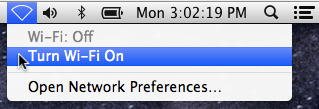
- Once completed, you can reconnect to your network and test the connection again.
Related: How to run a Traceroute (Mac OS)
Additional Troubleshooting Tips
You can run a ping test to determine the status and speed of our Internet connection using a website's domain address or IP address. If you are unable to ping both a website's domain name and IP address, this would indicate that there is no active connection present and that you will need to troubleshoot your Internet connection.
Learn more: How to run a ping test (Windows), How to run a ping test (Mac OS)
Additional Information
LAN Network Adapters are listed with a description of the connection, including the model of the adapter, as well as the speed. An example of a LAN Network Adapter: Intel® 82579 LM Gigabit Network Connection
Wireless Network Adapters will often contain the terms WiFi, wireless, WLAN, or 802.11a, 802.11b, 802.11g, or 802.11n. An example of a Wireless Network Adapter: Intel® 82579 LM Gigabit Network Connection
Related: WiFi Connectivity TroubleshootingRelated readings
Not what you're looking for? Try these related articles and discussions.
